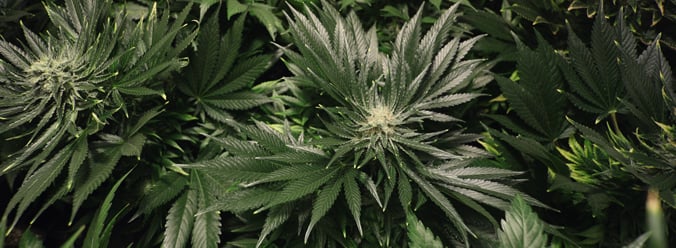Nitrogen Toxicity & The Cannabis Plant
Published :
Aug 9, 2017
Categories :
Cannabis cultivation

It is possible to kill cannabis with kindness if you give your plants too much nitrogen. Identifying nitrogen toxicity makes sure you don't go overboard and do more harm than good. Ensure happy and healthy plants by knowing what to look for when there has been a nitrogen overload.
NITROGEN
The clichè "too much of a good thing" is never more true than over-loving your plants with nitrogen. Nitrogen is an essential element in the whole lifecycle of the cannabis plant. However, it can be a toxin if you are too heavy handed. In ideal quantities nitrogen is an essential building block of plant life ensuring vibrant and healthy growth. Giving too much nitrogen in an effort to boost plant growth instead leads to quick deterioration and very sick looking ladies.
SYMPTOMS
The rapid growing cannabis plant needs a considerable amount of nitrogen during the vegetative phase. It is quite difficult to overdose with nitrogen using contemporary commercial fertilizers that are the result of years of experience. You will know you have nitrogen toxicity when:
- * Leaves become deep dark green.
- * Leaf stems may turn purple.
- * Leaf tips will first turn yellow then burn.
- * Leaves will claw. In some species leaf tips will bend horizontally at 90° then claw. If left untreated clawing will get worse, the leaves will yellow, die then fall off.
- * Leaves will bowl or cup.
- * Heat and pH issues will amplify the problem. Plants become less resilient to stresses when suffering toxicity.
- * Seedlings will stress, become dark green and slow in growth.
Leaf clawing and cupping is also a symptom of over-watering. However, with overwatering leaves become dull and lack lustre. With nitrogen toxicity they become glossy and dark green.

PREVENTION IS THE BEST POLICY
Indoors or outdoors it is always recommended to avoid soils with time release fertilizers. They can cause toxicity during the flowering phase when cannabis requires little to no nitrogen.
Always follow manufacturers instructions when using commercial nutrients. Modifying nutrients and making hot mixes "to speed things up" will only lead to heartbreak.
SOLUTION
The easiest thing to do is reduce the amount of nitrogen your plants are getting. Don't use such strong mixes of nutrients. Be careful when measuring. Make sure you are following the manufacturers instructions. Often 3/4 strength nutrient mixes are better than full strength. Flush the plants out with pH balanced water then resume with a weaker mix. When plants have recovered resume regular watering routine. Affected leaves won't recover and will still dry out. Remove them to avoid mold problems.






































